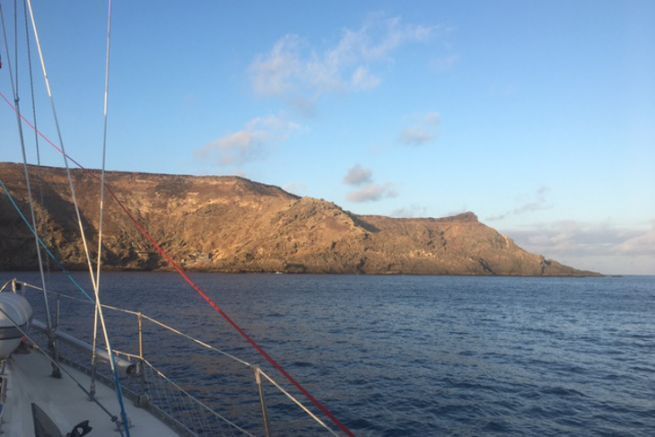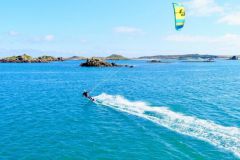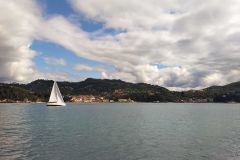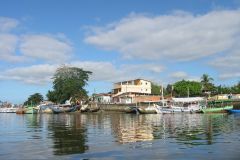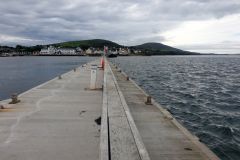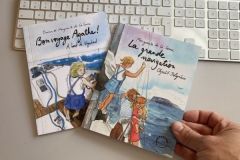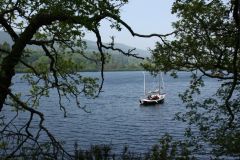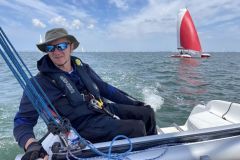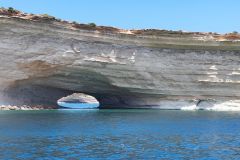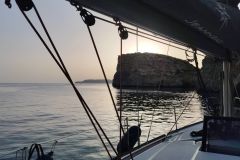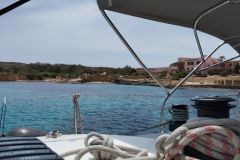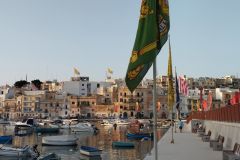Lost Islands between Madeira and the Canaries
Let's imagine that you left Brittany or passed Gibraltar for a winter Atlantic crossing. You may have visited the Azores archipelago and then, going south, Madeira before reaching the Canaries. Classic. A careful observation of the truck that accompanies most of the "transateux" will have made you discover, between Madeira and Tenerife, two or three tiny islands hanging on the thirtieth parallel. These are the Ilhas Selvagens, the southernmost lands (well, rocks...) of Portugal. The Spaniards, who are much closer than the Portuguese (70 nautical miles against 120), would like to reclassify these islands as ordinary rocks, which would significantly extend their exclusive economic zone. This is not to Lisbon's taste..
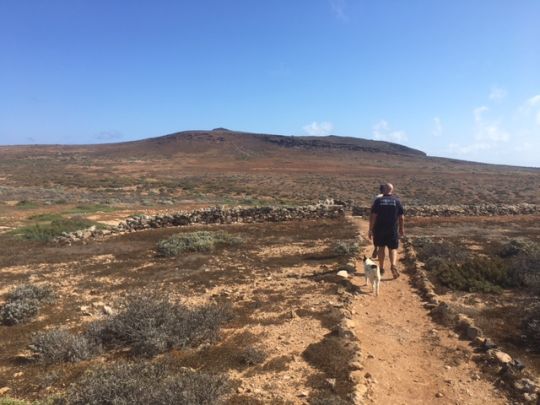
A nature reserve accessible in the heart of the Atlantic
The archipelago, under the impulse of an ornithologist from Funchal, Dr. Alec Zino, was classified as a terrestrial reserve as early as 1971, after the Portuguese government bought it from its owner, Luis Machado, and one wonders how he had acquired it before. An extension of the reserve now covers the maritime area up to the 200 m zone, which makes it the largest Portuguese natural park by the way
Under certain conditions, visiting sailors are welcome. All you have to do is make a request via the internet. This works quite well. The authorization is (in theory) delivered for one day from midnight to midnight, which is neither practical nor logical considering the navigation requirements. Fortunately, on the spot, things work out as we will see.
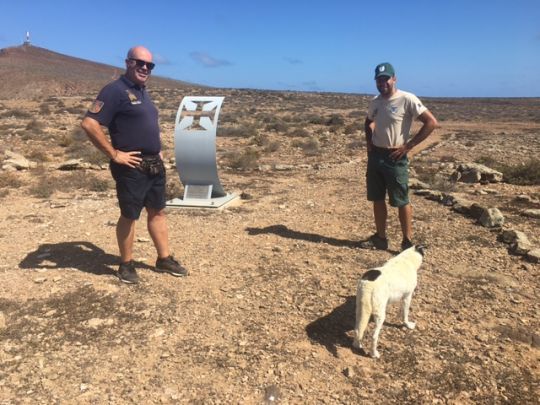
Access by boat without major difficulties
The Imray guide to the Atlantic islands suggests that the place is poorly paved, its mapping uncertain. It would therefore be appropriate to give it a wide tour. This is probably a bit exaggerated. Of course, there are some shallows, but provided that you get there and leave during the day, and that you respect the sounding lines, the navigation is not difficult, even if you are alone. Moreover, I was able to see that the Navionics cartography was correct, at least for the eastern approach to Selvagem Grande, thus contradicting what the Imray guide said. Anchoring is authorized at Enseada das Cagarras, a cove located at the south of the island, quite well sheltered from the prevailing N-E winds. I arrived there around 7 pm (during the day), and anchored by ten meters on a sandy and rocky bottom, surrounded by the clouds of shearwaters with their surprisingly human calls. The guards only came the next morning to check the authorizations (which they had received by e-mail beforehand). Their kindness is without equal. I was allowed to stay for 48 hours with the possibility (for the second night) to moor at one of the two moorings inside the bay. I chose, if possible, the one with a simple buoy rather than the metallic one, cruel for the gelcoat or the paint. I must point out that I was the only boat, the fifth since mid-August when it was the 26th... And as one of the guards pointed out to me, "there is less passage in winter!"
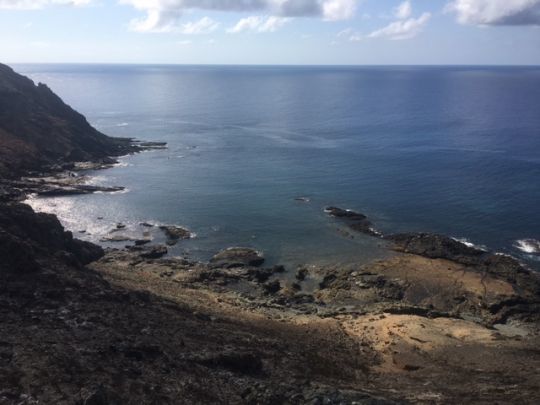
Discovery of the island fauna
At the time of my visit, the number of mammals on Selvagem Grande was ten, including me. Nine Homo sapiens including some scientists and a female Canis lupus of undetermined race (but nice) arrived on the island twelve or thirteen years ago. So the census is done quite quickly! At one time, goat rats and long-eared beasts, brought by the first boats, swarmed to the point that they threatened the precarious balance of the island. They were totally eradicated between 2000 and 2004. For the birds, it is different... There are thousands of them, at home, and they return year after year to nest on the island of their birth.
I was invited to disembark in front of the two or three buildings of the base with my dinghy around 10:30 am. A slipway allows us to get ashore and I suggest the oars rather than the outboard motor because the rocks are numerous, especially at low tide... We can guess a kitchen, some rooms, a workshop... A huge table under a canopy welcomes guards and scientists for meals (or card games...). Is it necessary to specify it? There is not a drop of fresh water on the island. One of the buildings houses a water maker, the only source of noise pollution, one or two hours a day. Otherwise, the electrical energy is of solar origin.
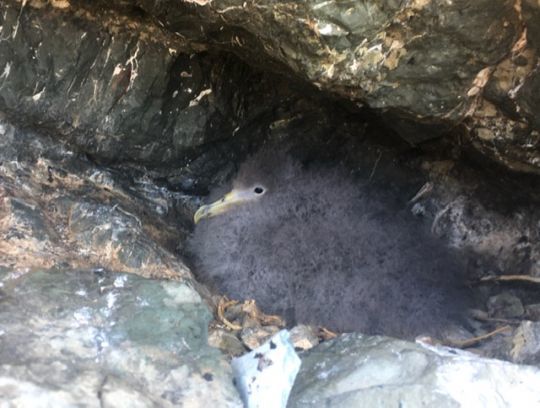
A naturalist guide, a marine guard (we exchanged in English) and the dog - named Selvagem as it should be! - accompanied me for almost two hours on the marked trails of the island, a bit like it is done in the Galapagos although, it seems, in a much more cordial way. Bring a hat and hiking shoes. The trail is - literally - lined with the burrows of the grey shearwaters. At the first one, you bend down to look at the fluffy gray chick, the size of a quail, at the second, same thing. At the third, the attraction remains sufficient. I admit that at the hundred and fiftieth, with the sun beating down, we look for lizards and endemic tarantulas, a kind of local gecko. Fortunately for our tranquility, the adult shearwaters fish off the coast during the day and return to the nest only in the evening. The juveniles are therefore left alone and yet there seems to be no fear. Even the bitch navigates in the middle of all this little world without triggering the slightest reaction. Neither on one side nor on the other.
A volcanic and peeling island
The top of the island is a plateau criss-crossed with low walls that attest to attempts at human occupation, as well as the fountain, dry as the amadou, dug into the cliffside. Two volcanic cones emerge from this plateau. The highest one, Pico de Atelaia, reaches 160 meters. It is topped by an antenna and a navigation light. It is dry, mineral, gray, ochre and of a staggering quiet beauty. A kind of original harmony..

Back at the base, I was offered a mug of fresh water and a banana which I could not refuse. Money here has no place! Back at the boat, I took a swim in a 24 degrees water. Equipped with a mask and a snorkel, I saw some fish, caught a glimpse of a grouper or two which I was told were carriers of ciguatera, which did not fail to surprise me in an environment apparently free of any pollution. It is well known that every paradise has its snake!
The next day, after this stopover which was not much and yet was everything, I cast off the hawser of the dead body and I sailed to Selvagem Pequena (at the anchorage known to be rolling) which I greeted from afar for lack of time. Then I pointed the bow at Lanzarote, gently pushed by a northerly flow..
Practical information
Request for authorization in English:
nao.responder.simplifica@madeira.gov.pt.
or, more simply, contact Carolina Santos, the person in charge:
carolina.santos@madeira.gov.pt
The Covid vaccination certificate must be sent to Madeirasafe after creating an account on madeirasafe.com
